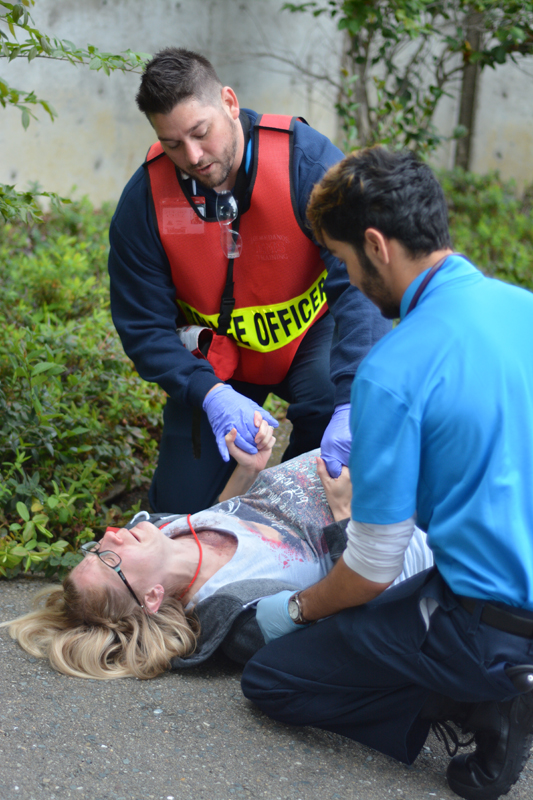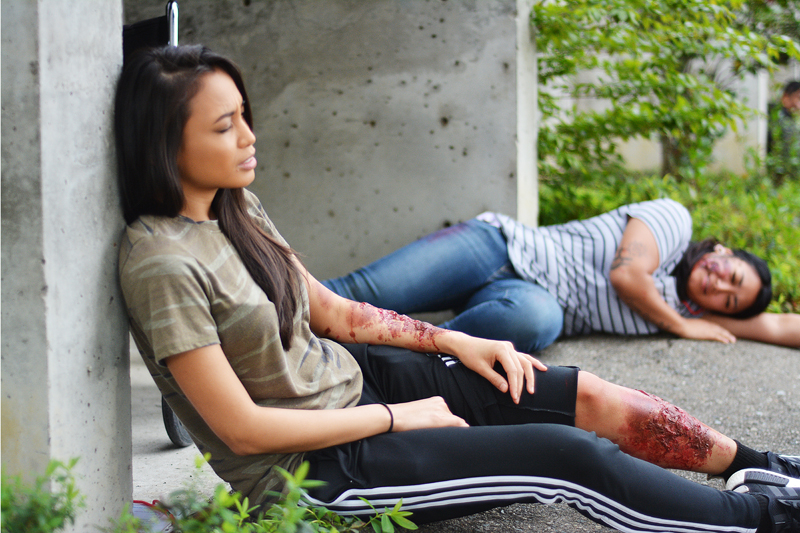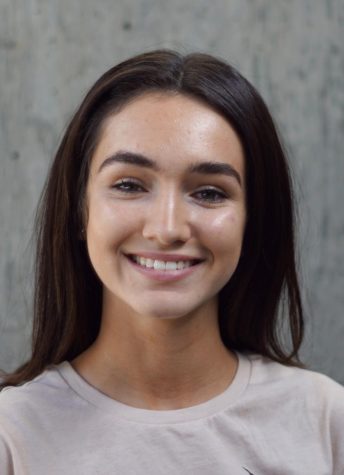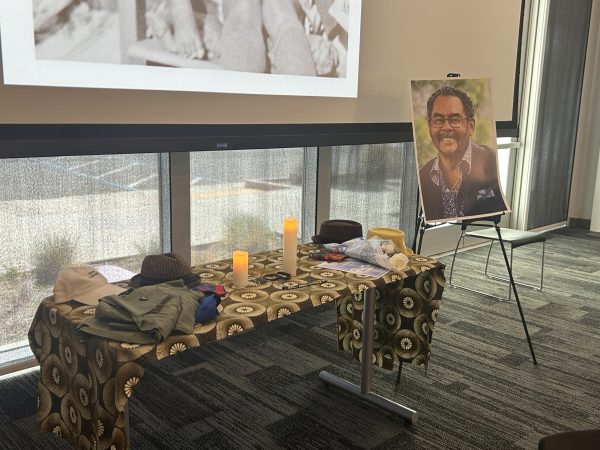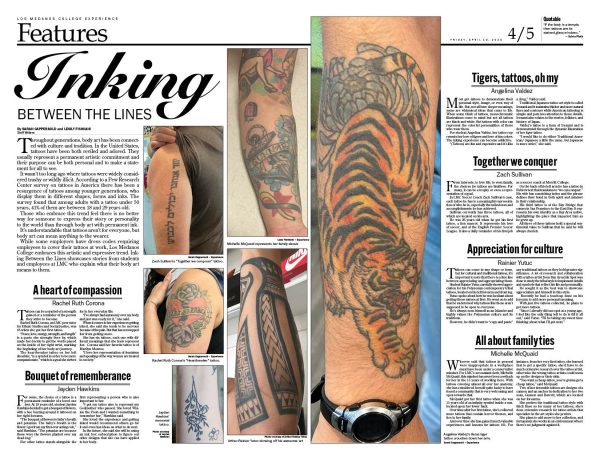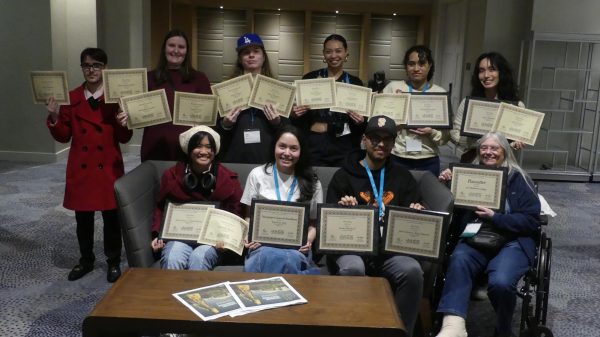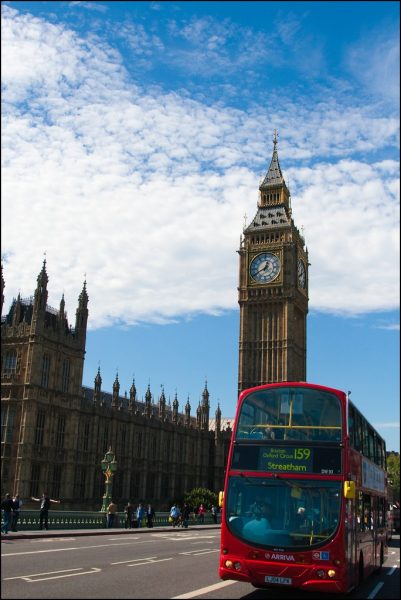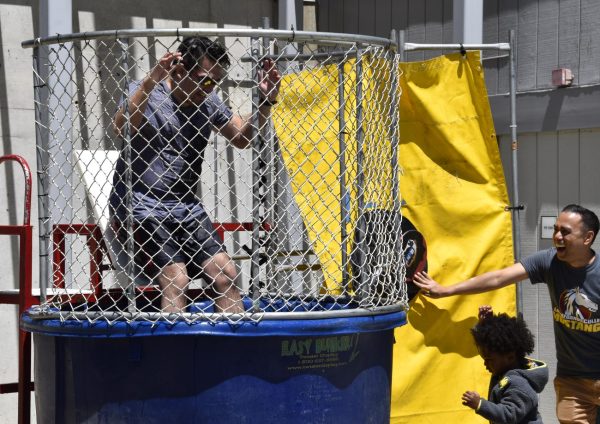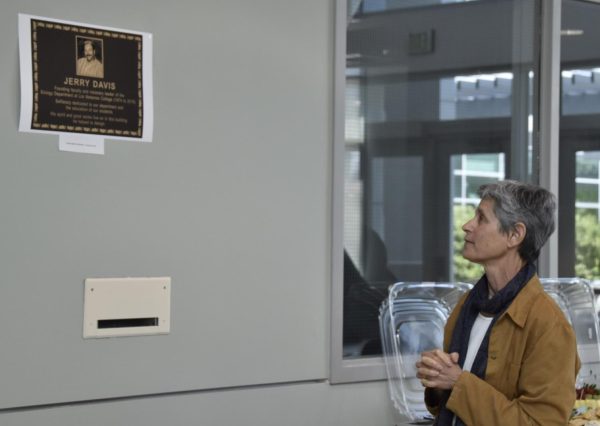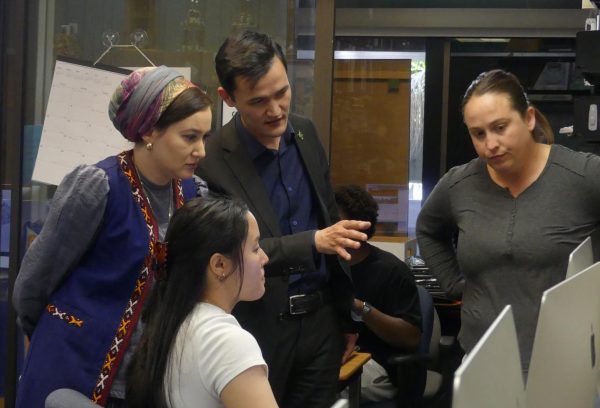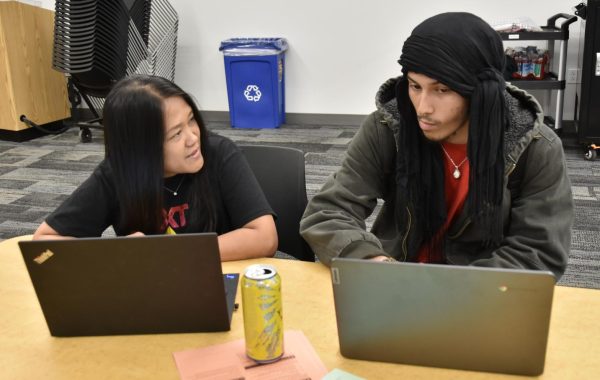Prep for a quake
Students learn to handle mass casualty event
April 12, 2018
The Los Medanos College Nursing Department held its third annual mass casualty simulation-training event Wednesday, April 11. Throughout the campus, student and volunteer actors mimed various injuries and ailments for LMC nursing and medical students to diagnose and treat in a simulation of a real-life disaster response scenario —police and fire students also participated.
LMC Nursing Department simulation faculty members Julie O’Brien and Trang Nguyen are the ones who first created the simulation program and do the annual prep work for it, including making homemade latex and stained glass for the purposes of moulage, or the process of applying convincing fake injuries for simulations like this one.
“It’s about teamwork and safety… which involves police, nursing and fire,” said O’Brien before the event. “The important thing is, during the simulation, students can practice skills while being in a safe environment.”
This year’s event was themed as an earthquake and a resulting explosion. Previous years saw the nursing students respond to the aftermaths of an active shooter situation and a terrorist bombing attack. Mass casualty events are inevitable for those in the medical field, and this simulation aims to give them knowledge on how to handle such a situation.
“The whole goal of this is just getting students ready for skills that they wouldn’t ordinarily get,” O’Brien commented. “With today’s world, with the way our society is, with unfortunately all the mass shootings and all the horrible things happening, this is going to give them some skills.”
A major element in mass casualty training is teaching a student how to triage, or properly allocate limited resources in a crisis. In an event like a bombing or an earthquake, response teams often simply do not have the time and medical equipment to treat every victim, and the triage process involves deciding who needs immediate attention, who is safe to leave waiting, and who can no longer be helped.
Nguyen teaches her students a version of triage that she calls SALT, or Sort, Assess, Life-Saving Interventions and Transport or Triage. The simulation, along with other small-scale ones the department runs regularly, allow students to apply these principles in a pseudo real-world setting beyond the textbook and quiz.
“They usually have to do these drills in hospitals,” O’Brien commented. “But we’ve taken that to the school so that by the time they go to the hospitals, they’re already going have the heads up on how to triage and how to handle a mass casualty. We’re hoping that never happens of course, but you have to be ready, and this is going make them as ready as we can.”
The scale of the event is both exciting and a little intimidating for nursing students, who are required to participate in it during their second year in the program, either as a patient or as a nurse.
“If we were doing this last year, I would not have been able to do it,” said Victoria Darrow, who participated in the program as a nurse working with blunt force trauma injuries. For her, the event is a great lesson on “how to handle stressful situations” and remaining “in a calm and collected manner” while working a sensitive job.
Erika Talens, who also participated as a nurse with the blunt force trauma team, described herself as “nervous and excited” ahead of the event, but also said she was “grateful” for the volunteers and for the opportunity to “show… our real skills.”
Students not only participated, they also helped O’Brien and Nguyen with the prep work for it; along with faculty, staff and volunteer nurses, doctors and respiratory therapists from regional hospitals including Kaiser and John Muir, several alumni of the LMC nursing program returned to help set the event up.
“I had a great experience. It was fun. It was intense,” said Moreen Redita, who volunteered along with Acela Vergara and Ashley Moore. All three are past LMC nursing students now pursuing bachelors in nursing at Cal State East Bay.
“Last year’s theme was a shooting, and unfortunately it was all too real,” said Vergara, taking time to praise the actors. “Your heart was racing even though you knew it was fake.”
While the event can be intense and even a bit frightening, it can also be an eye-opener, and a unique opportunity for students to understand what their actual careers will look like.
“In class you learn a lot of textbook,” said Moore. “This taught a lot of real world and how chaotic it can be, really puts it into perspective… We had such a good experience last year, we wanted to give back.”
That desire to give back is what Nguyen and O’Brien assume attracted such a large amount of volunteers. According to O’Brien, they did no advertising for the event but had so many volunteers they “almost had to turn people away.”
“There’s people that just want to be a part of it,” said O’Brien. “Everybody in nursing knows that, if I see an accident on the freeway, we need to stop, so there’s nothing more than preparedness.”

